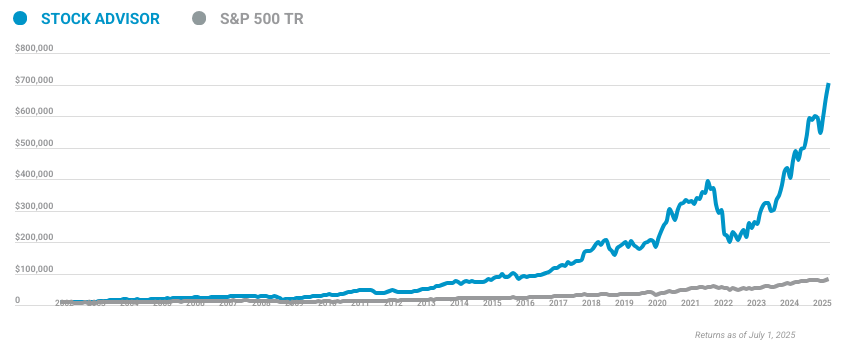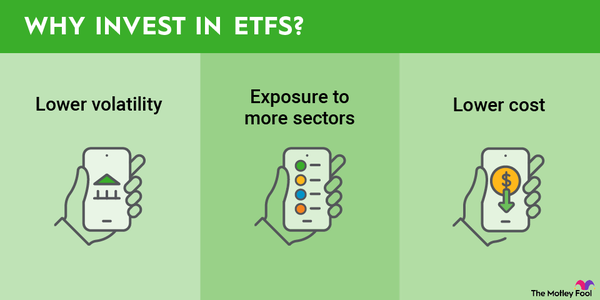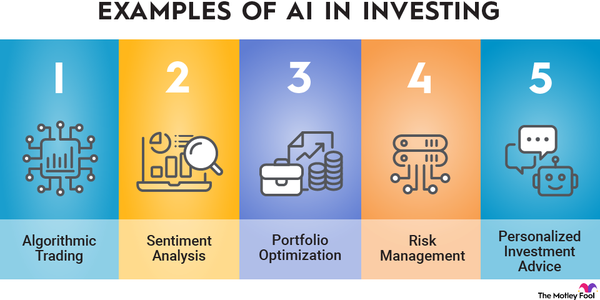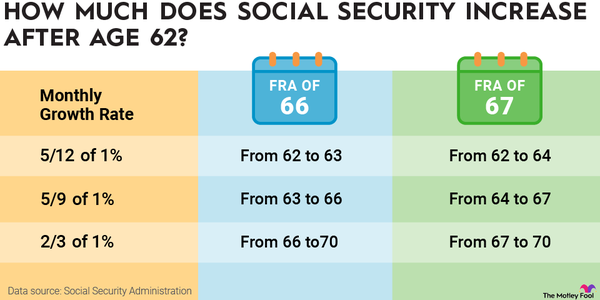One of the most important aspects of a comfortable retirement is having more than one source of retirement income. Most Americans expect to have diversified sources of income during retirement, but in reality, many end up relying more heavily on Social Security than they intended to.
This expectation mismatch can create uncomfortable financial situations and drive retirees back to work.
To better understand how Americans are preparing for and faring in retirement, The Motley Fool has compiled the latest data on retirement income sources.
Sources of retirement income: Social Security tops the list
Social Security is the most common source of income for retirees. That’s no surprise -- nearly every American contributes to Social Security and will receive benefits if they qualify.
There’s a significant drop-off in retirees’ access to other sources of income. Just 57% have an investment retirement account, like an employer-sponsored 401(k) or an IRA, and 51% have access to a pension through an employer. Forty-eight percent report income through investment interest, dividends, or rental property. A third of retirees say they make money through a wage or salary.
Social Security is not designed to be the sole source of income in retirement, which makes it worrisome that more retirees aren’t tapping into other sources of money. There are a few reasons that is the case.
Not every company offers a retirement plan, and in many cases, it’s up to the employee to opt in and set a contribution. That creates a participation gap, according to Tyler Bond, research director at the National Institute on Retirement Security.
“Nearly half of workers do not participate in a retirement savings plan via their employer. This means they are likely not saving for retirement at all,” he said. “Second, even if workers are offered a plan, they must choose to participate, decide how much to contribute, and decide how their contributions are invested.”
Bond added that small businesses lag in providing access to retirement investment accounts.
The outcome, according to Alicia H. Munnell, director of the Center for Retirement Research at Boston College, is that “some workers end up totally reliant on Social Security and those who weave in and out of coverage end up with modest balances.”
Munnell added that employer-sponsored retirement plans, like 401(k)s, provide outsized benefits for the top 40% of earners nearing retirement. Among the top 20% of earners age 55 to 64, 76% have a 401(k) or IRA, and the median balance is $1 million.
Among the lowest 20% of earners in that age group, just 25% have a 401(k) or IRA and the median balance is $25,000.
For comparison, the median retirement savings amount was $87,000 in 2022, according to the Federal Reserve.
At least part of the low participation in retirement investment accounts is due to the shift away from pensions, Catherine Collinson, CEO and president of Transamerica Institute and Transamerica Center for Retirement Studies, explained.
“In recent decades, traditional pensions have been replaced with 401(k) and similar plans -- and many retirees did not have access to such plans and/or they were unable to adequately save. The end result is a heavy reliance on Social Security,” she said.
Retirees that rely mostly on Social Security are least financially comfortable
The more retirees rely on Social Security, the less financially comfortable they report being, according to data from Gallup. Retirees with more than one major source of income are more financially comfortable, particularly if Social Security is not one of them.
Ninety-four percent of retirees with one or two major sources of income outside of Social Security report being financially comfortable compared to just 60% of those who say Social Security is their only major source of income.
That is consistent with data from the Federal Reserve, which shows that a higher percentage of retirees with multiple sources of retirement income report being at least financially okay compared to those that rely entirely on Social Security.
Among retirees with no private sources of income, like a retirement investment account or rental property, 52% say they’re doing at least okay financially. Meanwhile, 95% of retirees who report having a pension and interest, dividends, or rents report doing at least okay.
Retirees rely on Social Security more than they expected to
Thirty-five percent of working Americans expected Social Security to be a major source of retirement income, but 58% of retirees say the program is a major source of cash for them, according to a 2024 Gallup poll.
On the other hand, 50% of those working think a retirement investment account or savings will be a major source of income in retirement, but among those retired, just 29% say those types of accounts compose a major source of income.
Data from the Social Security Administration suggests workers may be more clear-eyed about how much they’ll rely on Social Security in retirement. In their analysis, 40% of retirees rely on Social Security for 50% or more of their income, and 14% rely on it for 90% or more.
“If ‘major source’ means 50 percent or more, then it seems like the expectations of near retirees are in line with reality,” Munnell said.
Still, mismatched expectations about expected sources of retirement income can complicate retirement planning. Bond told The Motley Fool that they may stem from workers not appreciating the amount of savings they’ll need to have a comfortable retirement.
Based on research from the National Institute on Retirement Security, “most significantly overestimated how much annual income that amount of savings would provide,” Bond said. “As a result, Social Security benefits often become a more important source of retirement income than many expect.”
Two other factors can complicate retirement income planning, Bond said: the timing of retirement and how long retirement will last.
A 2024 study by the Transamerica Center for Retirement Studies found that 58% of retirees retired sooner than planned, in large part due to health or employment issues.
Retiring earlier than expected complicates retirement income planning, Collinson said. “First, it cuts short one’s time horizon for bringing in income and employee benefits, growing one’s savings, and smoothly transitioning. Secondly, most retirees claim their Social Security before their full retirement age at a reduced monthly benefit.”
15% of retirees report working for pay in the last month
Returning to work is a way for those in retirement to augment their income. Fifteen percent of retirees report doing some work for pay in the last month, according to the Federal Reserve. Eleven percent reported doing part-time work, and 4% reported doing full-time work.
Fifty percent of retirees surveyed by The Motley Fool are considering going back to work due to what they consider an inadequate Social Security cost-of-living adjustment.
The decision to return to work in retirement is not necessarily always driven by financial need. “The essential question to ask here is whether retirees are returning to work because they want to or because they have to. It is likely a mix of both,” Bond told The Motley Fool.
That may represent a shift in thinking about retirement, Collinson said. “There’s a growing trend of people working in retirement. Today, people view retirement entirely differently from past generations.”
A 2024 survey from the Transamerica Institute and Transamerica Center for Retirement Studies shows that 54% of workers plan to continue working after they retire. Among retirees surveyed, 8% expect to always work.
Younger, less educated, and more recent retirees are most likely to work
Retirees who worked for pay in 2023 were more likely to be recently retired, younger, and less educated than those that opted not to work, according to data from the Federal Reserve.
For example:
- 16% of retirees with at least a bachelor’s degree worked for pay compared to 12% with a high school degree or less.
- 28% of retirees that retired in the last year worked for pay compared to 11% who retired five or more years ago.
- 12% of retirees over 65 worked for pay compared to 15% of all retirees.
How to diversify your retirement income
Having more than one source of income in retirement can be the key to a financially comfortable retirement. That’s backed by survey data that shows the retirees with multiple sources of retirement income are more financially comfortable, particularly if they’ve managed to reduce their reliance on Social Security.
The first step in diversifying retirement income is building a retirement plan, including when you want to retire and estimating how much money you’ll need in retirement to be financially stable.
From there, you can devise a retirement savings strategy that will likely center around a tax-preferred retirement investment account, like a 401(k) or IRA. Annuities, savings, and real estate can be used to further diversify income in retirement. As you approach retirement, consider different ways to sustainably turn those savings into retirement income.
Getting ready for retirement will always come with uncertainties. Having a few clear, fundamental goals to build toward, like diversifying your sources of cash, can reduce some of that uncertainty and lead toward a more comfortable retirement.
Sources
- Federal Reserve (2024). “Economic Well-Being of U.S. Households (SHED).”
- Federal Reserve (2023). "Survey of Consumer Finances."
- Gallup (2024). “Why Americans Are Pleasantly Surprised in Retirement.”
- National Institute on Retirement Security (2024). “Retirement Insecurity 2024.”
- Social Security Administration (2021). “Improving the Measurement of Retirement Income of the Aged Population.”
- Transamerica Center for Retirement Studies (2024). “Retiree Life in the Post-Pandemic Economy: 24th Annual Transamerica Retirement Survey.”
The Motley Fool has a disclosure policy.



































































